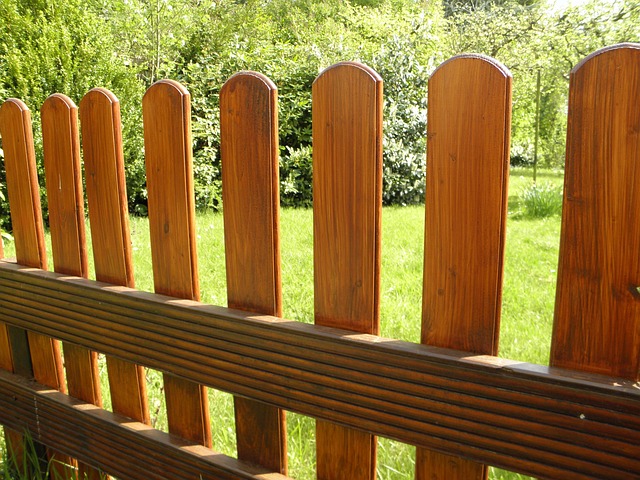In New Bedford, a well-maintained fence is not just an addition to your property but also a statement of style and security. However, fences often face common issues due to weather conditions, pest infestations, or poor installation. Understanding these problems and the importance of professional installation is key to ensuring your investment lasts. This article guides you through everything from identifying typical New Bedford fence issues to choosing durable materials, repairing, and maintaining your fence for years to come.
- Understanding Common Fence Issues in New Bedford
- The Importance of Professional Fence Installation
- Choosing the Right Materials for Durability
- Step-by-Step Guide to Repairing Your Fence
- Maintaining Your New Fence: Tips and Tricks
Understanding Common Fence Issues in New Bedford
Fences in New Bedford, like anywhere else, face a range of common issues due to environmental factors, age, and poor installation. One of the most frequent problems is rot, which can be exacerbated by the region’s moist climate. Wooden fences, in particular, are susceptible to decay, leading to weak posts, warped panels, and uneven rails. Another widespread issue is damage from weather events like storms and high winds, which can knock over or severely bend fence sections.
Overgrown vegetation is also a frequent culprit, as plants and roots can infiltrate cracks and crevices, causing structural damage over time. Poor maintenance, such as neglecting to paint or seal wooden fences regularly, contributes to these issues by speeding up the natural deterioration process. Understanding these common problems is essential for homeowners and property managers in New Bedford to effectively maintain and, when necessary, repair or replace their fences.
The Importance of Professional Fence Installation
A well-installed fence is more than just a barrier; it’s an investment in your property’s security, aesthetics, and long-term value. Professional fence installation offers numerous benefits that DIY projects simply can’t match. Experts bring expertise and experience, ensuring your fence is built to last, with proper materials and techniques used throughout the process. This prevents issues like uneven posts, weak connections, or incorrect spacing, which not only compromise the fence’s structural integrity but also its overall look.
Professional installers also consider local building codes and regulations, guaranteeing your new fence complies with these requirements. This is particularly important for safety and liability reasons, as an improperly installed fence could pose risks to neighbors and passersby. Additionally, professionals often provide warranties on their work, offering peace of mind and protection against unexpected repairs or replacements in the future.
Choosing the Right Materials for Durability
When it comes to fence repair and installation, selecting the appropriate materials is paramount for ensuring longevity and durability. The right choice can withstand various weather conditions, from harsh winters to hot summers, while also resisting potential damage caused by pests or vandalism. Metal, such as steel or aluminum, offers superior strength and resistance to rust, making it ideal for high-traffic areas or regions with extreme climates. Alternatively, wood fences provide a classic aesthetic appeal but require regular maintenance to prevent rot and pest infestations.
For an enduring solution, consider composite materials that blend the best of both worlds. These innovative options mimic the look of wood but are made from a combination of recycled plastics and wood fibers, offering excellent resistance to fading, cracking, and splitting. This durability translates to less time and money spent on maintenance, ensuring your fence remains in top condition for years to come.
Step-by-Step Guide to Repairing Your Fence
Repairing your fence is an easy do-it-yourself project that can enhance the curb appeal of your property. Here’s a step-by-step guide to help you get started. First, assess the damage and gather all necessary tools and materials like replacement posts, rails, or panels, fencing paint, screws, and a drill.
Start by removing any loose debris from around the fence and cleaning the area. If the damage is limited to a few boards, carefully remove them using a screwdriver or saw, taking note of their placement for future reference. Measure and cut replacement boards to size, ensuring they fit snugly into the existing structure. Reinstall the removed posts if necessary, securing them firmly in place with screws or concrete anchors. Finally, paint the fence to match its original aesthetic, allowing it to stand as a sturdy and attractive border around your property.
Maintaining Your New Fence: Tips and Tricks
A newly installed fence is an exciting addition to any property, enhancing curb appeal and providing much-needed privacy. However, keeping it in top condition is essential for longevity. Regular maintenance is key; start by inspecting your fence after severe weather events like storms or heavy snowfalls. Look out for loose panels, damaged posts, or any signs of rot, especially if made from wood. Promptly repairing these issues will prevent further deterioration and ensure the fence remains sturdy.
Keep the fence clean to preserve its appearance. Regular washing with a mild detergent and a soft-bristled brush will remove dirt and grime accumulated over time. Avoid using harsh chemicals, as they might damage the fence’s finish. Additionally, applying a fresh coat of paint or sealant every couple of years will protect it from the elements, prolonging its lifespan. Keep vegetation at bay; trim any overgrowth near the fence lines to prevent damage from roots and ensure easy access for inspections and repairs.
